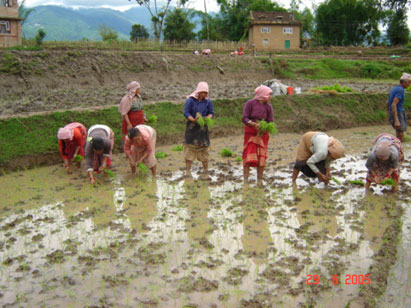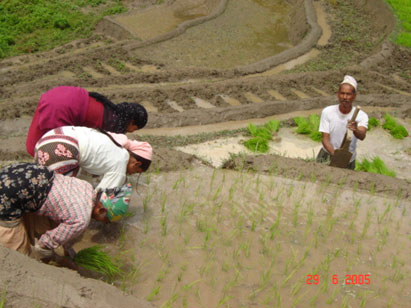Report from Sundar Bhattarai, Master Programme in Indigenous Studies, University of Tromsø. Project 200501253-22
Financial support to the project:
“The ‘Bola’ and ‘Parma’ of the Newari: The significance of labour exchange systems among indigenous peasants in Nepal”
Nepal has known as an agricultural-based country in South Asia where 59 indigenous ethnic groups/nationalities and other peoples groups are in the mainstream of national development. There are multi-ethnic groups of people, multi-linguistics, multi-religious and different cultural diversities are in Nepal however most of them are assimilated by Hindu religion and Nepali cultures in these days. After the launch of new Nepalese constitution in 1990 has put forward a conceptual design to uplift the living standards of the Indigenous Nationalities respectively known, identified and addressed as ‘Adibasi Janajati’ – by removing all sorts of econonomic and social inequalities and to set up and develop their healthy social life based on justice and morality. The census data of 2001 shows there are 37.2 per cent total population belongs to indigenous nationalities in the kingdom of Nepal. Among these Indigenous Nationalities Newar is one of them and consists 5.48 per cent of the total population of Nepal and secured a rich cultural values after the Nepalese. Their own mother tongue is called ‘Newari’ and ‘Nepal Bhasa’ also. Newari culture and rituals are mostly popular not only in Nepal but out of the country too. Within the Nepalese social life, there are various Newari castes and sub-castes group and some of their castes automatically reflect their description of professional works as well for the years. Broadly to say it is more complex to clarify about their castes and main occupation at all. But even the Newars who live basically in the rural parts of Kathmandu valley it is clear that the agriculture has become as a prime occupation of their living. The Newar farmers being called as ‘Jyapu’ who apply ‘Bola’ and ‘Parma’ system basically in their agriculture especially in rice farming period. Both of these terms relating to traditional labor exchange practices in the base of reciprocity as an important discourse of Economic Anthropology.
The Mamaiju Village Development Committee (VDC) lies on Kathmandu district which is one of 57 villages Kathmandu and is only 7 kilometer far from the city center. Though it is closed to city and having most of modern physical infrastructures but the agricultural pattern seems to be subsistence basis. And it seems the role of traditional knowledge and technology has dominative power rather than modern technology in their agriculture life. But some Newar farmers are intensively started to grow green vegetable for the commercial purposes. The most of Newar of this village has been applying the ‘Bola’ as a reciprocal labour exchange practices in the time of rice plantation basically the month of June-August of every year. Now my interest is to see inside the ‘Bola’ what is it? When and how does it function and what are the significant factors of it to maintain their better social and cultural life? These are some my key queries in this study project. Preliminary it is seen that the most of Newari peasants of this village do not want to change this traditional system as ‘Bola’ which is interwoven with their interpersonal relationship. Some of economic anthropologists say that the idea of reciprocity is out of dated methods but it still prevails in underdeveloped country like in Nepal. So in this research it has been kept in mind that the reciprocity theory as regarding to labor exchange how far is it applicable or acceptable in the base of Newari peasant society of Manamaiju village of Nepal? However the social cultural values are always respectful everywhere we can not under estimate it in the base of development status.
The total duration of data collection of this project has been fixed for two months from Mid- June, 2005 to Mid-August, 2005. But due to the few weeks late of monsoon rain made delayed for rice planning work in Kathmandu this year and which created me too a bit late start for primary data collection with the farmers who are the key agent of my participatory observation methods in the right period of rice planting phase. Actually I started the primary data collection from the last of June to first week of September in 2005. The data collection was carried out by using both techniques as qualitative and quantitative methods. In the process of quantitative data collection and to fulfill the questionnaire forms I had to hire some appropriate manpower in the base of certain economic initiations. Similarly the secondary data also has been collected from different places in the rest of time during my fieldwork.
Lastly I would like to express my sincere thanks to Centre for Sámi Studies for the complementary financial support to my field work in addition to NORAD Fellowship. I am also grateful to SEMUT who provided me NOK 3.000 to assist this field work. After this fieldworks the data analysis and my thesis writing is going on process and I am sure the final result of my study will be represented by May of 2006.
Read the thesis online – Munin



